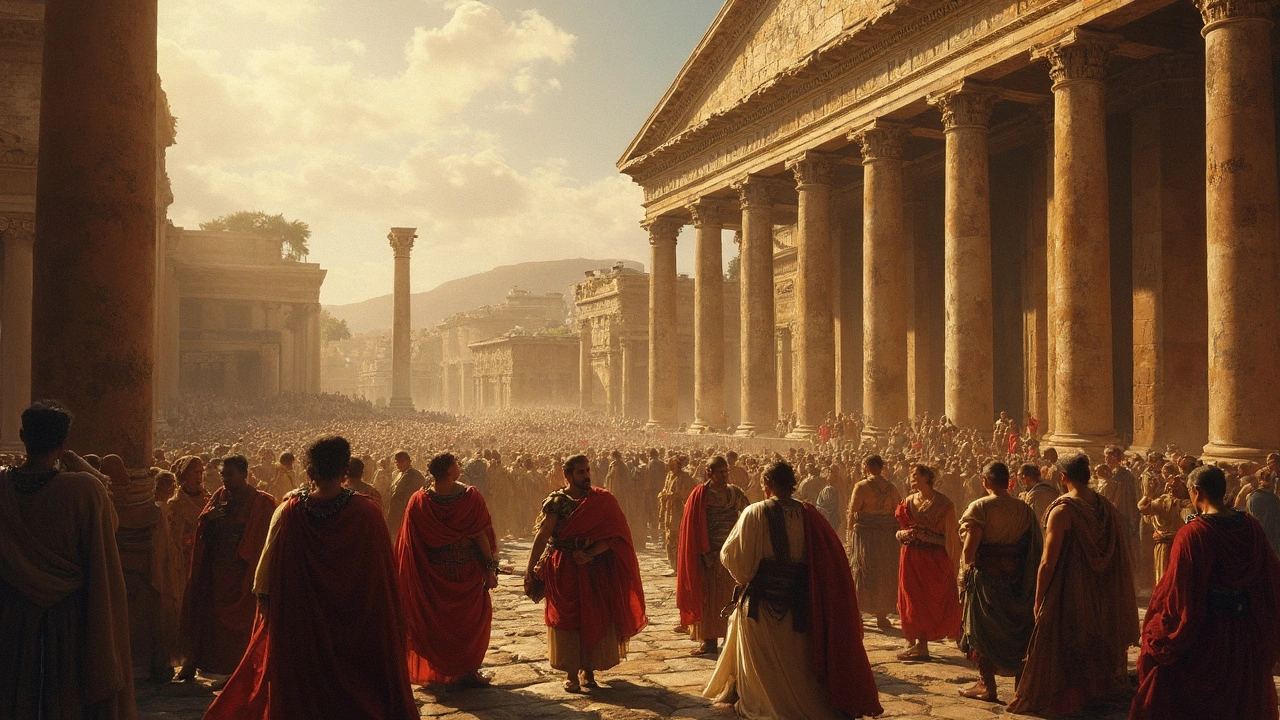Ancient Roman architecture wasn't just about impressive buildings; it was a powerful tool in politics, used to showcase strength and control. From grand forums to monumental arches, the construction projects reflected the authority of their commissioners and communicated messages of power. Understanding this connection helps us see how architecture can influence society and even guide political landscapes. In Rome, every stone and column had a political story to tell, painting a vivid picture of the empire's ambitions.
Architecture and Power: How Buildings Shape Authority
Buildings are more than shelter. They show who makes decisions, who pays, and who controls space. When a government builds a grand palace, a bank puts glass towers downtown, or a church rises on a hill, that architecture speaks power to anyone who looks.
Power uses scale, material, and placement. Big scale makes people feel small. Stone and marble suggest permanence; glass and steel hint at modern wealth. Placing a courthouse on a raised plaza or lining a boulevard with identical facades organizes movement and attention. Classical styles like Greek Revival and Beaux-Arts borrowed ancient symbols—columns, pediments—to link new institutions to old authority.
Visible tools of control
Access and circulation are deliberate. Wide steps, gated perimeters, and screened entrances separate insiders from outsiders. Windows, sightlines, and raised platforms guide who watches whom. Think of colonial administrative buildings in port cities: they often face the sea and dominate the skyline, signaling trade and rule. In modern cities, corporate high-tech towers show corporate power via skyline dominance and advanced materials.
Symbolism matters. Statues, friezes, and logos carry messages: stability, conquest, civic pride, or national myth. Monuments can celebrate or erase history. Urban planning itself can be political—boulevards can direct processions; grid plans can control movement; parks can stage public events. Authoritarian regimes often design monumental squares and long sightlines to stage power visibly.
How to read power in architecture
Want to spot power when you walk around a city? Check who built it, when, and why. Look at scale first: tall, dominant structures likely reflect economic or political weight. Study ornament: classical details often aim to legitimize; modern glass façades signal corporate or technological authority. Notice placement: corner sites, hilltops, waterfronts are coveted positions. Observe barriers: fences, checkpoints, and restricted entrances reveal control strategies.
Think about use over time. Buildings can shift from symbols of power to contested sites. A colonial mansion might become a museum, a factory could turn into lofts, and a palace can become a public museum or government office. Adaptive reuse changes meaning without erasing original power relations.
Architecture can also resist power. Community-built spaces, informal markets, and graffiti reclaim public ground. Design choices like open walkways, transparent facades, and accessible plazas invite participation rather than exclusion. Movements such as Constructivist and Neo-Futurist architecture show how designers tried to rethink who architecture serves.
Compare styles across neighborhoods: spot Beaux-Arts boulevards with grand facades, Greek Revival columns on government buildings, Roman arches on bridges, and high‑tech glass towers in financial districts. Photograph details, note dates or plaques, and record who funded the project. Over time those notes show patterns of investment and who the city was built to serve.
Practical tip: next time you visit a city, map the power centers—banks, government buildings, major religious sites, corporate headquarters. Note materials, scale, and access. Ask who benefits from the layout and who is kept out. That short practice turns casual sightseeing into a sharper way to understand history and current politics through buildings.

